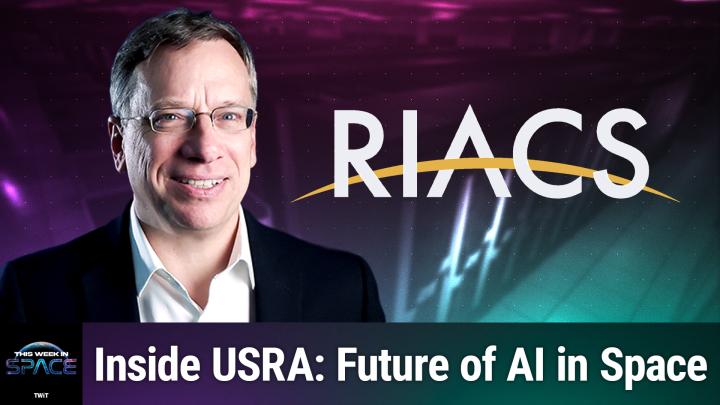Beyond HAL: Trustworthy AI for Deep Space
AI-generated, human-edited.
Artificial intelligence has been woven into NASA missions for more than four decades, but—as listeners learned in This Week in Space episode 159—the field is now racing into an era where quantum chips, massive language models, and free‑flying robots could become everyday crewmates. Guest Dr. David Bell, director of the Universities Space Research Association’s Research Institute for Advanced Computer Science (RIACS) and program manager for the joint NASA‑Google Quantum Artificial Intelligence Lab, joined hosts Rod Pyle and Tariq Malik to unpack that journey—from early neural‑net triumphs to tomorrow's sentient‑seeming assistants.
From Xerox PARC to Quantum Labs
Bell traced his 30‑year career: a decade at Xerox PARC studying AI for science and engineering, followed by two decades running RIACS at NASA Ames, where USRA bridges academia, government, and industry on cutting‑edge computing research. The institute's charter—set in 1983 when U.S. space policy singled out super‑computing, user interfaces, and AI as critical for exploration—still shapes its mandate today.
The First "Smart" Discoveries
AI's space résumé dates to the unsupervised AutoClass algorithm that sifted data from the IRAS infrared telescope satellite in the 1980s and revealed an entirely new kind of star. Bell's team later evolved those ideas into ExoMiner, a deep‑learning tool that confirmed more than 300 exoplanets with explainable reasoning—evidence that AI methods are maturing from a black‑box curiosity to a trustworthy scientific partner.
Agents, Schedulers, and Voice Assistants
While public hype centers on chatbots, Bell highlighted "agentic" AI already embedded in mission control:
- Mission‑planning engines such as Europa, Spiffy, and the collaborative Playbook app balance available power, timing, and science goals for Mars rovers.
- Mobile agents on the ISS have autonomously moved files between station and ground so humans can focus on higher‑value tasks.
- Remote Agent on Deep Space One handled onboard scheduling, execution, and anomaly recovery—diagnosing simulated thruster and sensor failures millions of miles from Earth.
- Clarissa, a rudimentary vocal procedure helper on the ISS, proved natural‑language interfaces could ease astronaut workload years before programs like Siri debuted.
The hosts asked Bell when AI will graduate from back‑room helper to onboard companion. He argued that advances in large language models—accelerated since the 2017 transformer breakthrough—mark an inflection point, enabling more conversational, context‑aware systems. Free‑flying Astrobee robots already roam the station, and future iterations could act on spoken requests while handling routine inspections or repairs.
Quantum Speedup and the Next Frontier
Bell detailed NASA‑USRA‑Google milestones that show quantum hardware is no longer science fiction. A quantum annealer solved an optimization problem 100 times faster than a million classical CPUs, demonstrating raw "speedup," and later gate‑model experiments achieved "quantum supremacy," outrunning top supercomputers on tasks they could never finish in a practical time span. The team's goal now is true "quantum advantage"—applying that power to real mission puzzles such as trajectory design or large‑scale scheduling.
Guardrails and Trust
Rod and Tariq raised the classic HAL‑9000 worry: how to keep ever‑smarter systems from going rogue. Bell emphasized that today's flight software is given narrowly defined authorities, and NASA's rigorous systems‑engineering and risk‑management culture is expanding to cover AI behaviors as capabilities grow.
Building Tomorrow's Workforce
Beyond research, USRA runs programs like the Feynman Quantum Academy and university data science curricula that immerse students in NASA open data and algorithms, ensuring a talent pipeline ready for AI‑driven exploration.
Looking Ahead
Bell envisions AI not only steering spacecraft but supporting astronauts' mental well‑being on lengthy voyages—think a personable TARS from Interstellar rather than a sterile dashboard widget. With quantum processors accelerating optimization and foundation models digesting petabytes of Earth‑observation data in minutes, the pace of innovation is poised to leap again—and RIACS is actively seeking new partners to push that frontier.
Ready for More?
This overview only scratches the surface. Catch the full conversation—including headline chatter about NASA's budget battle and the revived Planet 9 hunt—by listening to This Week in Space episode 159 on your favorite podcast app.
